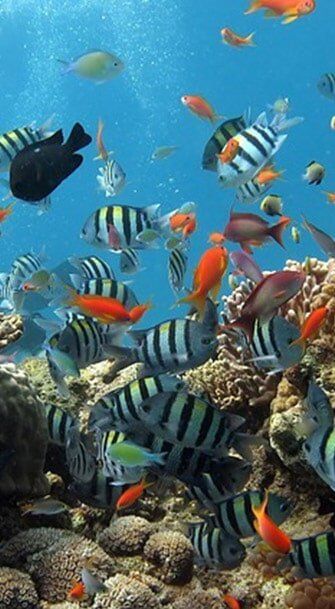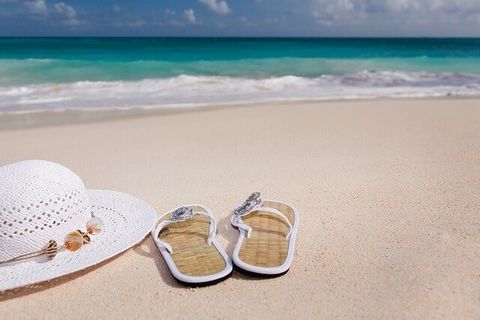NATURAL WONDERS
THE GREAT BARRIER REEF
Airlie Beach is the gateway to the 74 magical Whitsunday Islands. The town itself is only small and will take you about one hour leisurely stroll to get from one end to the other. Within this strip there are many bars, clothing stores, souvenir shops, outdoor eateries, clubs and our very own Airlie Lagoon.
The Great Barrier Reef World Heritage Area is 348, 000 square kilometres in area (an area bigger that the United Kingdom, Holland and Switzerland combined). It is the largest World Heritage Area and marine protected area in the world.
The reef contains over 2,900 reefs which includes 760 fringing reefs, and 300 coral cays.
You can experience one of the Seven Wonders of the World with a day trip to one of the pontoons with underwater viewing platforms with optional diving and snorkelling or you can experience the reef and islands on a sailing and diving charter boat (highly recommended)
The Great Barrier Reef is the world's largest and most complex expanse of living corals reefs supporting varied forms of marine life. As the world's largest coral reef eco system, the Great Barrier Reef is home to over 1500 species of fish, about 400 species of corals, 4,000 species of molluscs, 215 species of birds, 6 species of sea turtles and a host of sponges, anemones, worms, crustaceans, shells, sea stars, urchins. Scuba diving and snorkelling are the most popular ways to experience the unique and beautiful underwater world of the Great Barrier Reef.
MOST COMMONLY ASKED QUESTIONS
REEF FACTS AND FIGURES
The Great Barrier Reef Marine Park was established in 1975, and it is the world's largest marine protected area in the world. It is approximately 348,000 square kilometres in area and approximately 2,300 kilometres long, running from just north of Bundaberg to the tip of the Cape York Peninsula. The reef contains over 2,900 reefs which includes 760 fringing reefs, and 300 coral cays. There are also 618 continental islands, which were once part of the mainland. As the world's largest coral reef ecosystem the Great Barrier Reef is home to approximately 1,500 species of fish, 400 species of corals, 4,000 species of molluscs, 500 species of seaweed, 215 species of birds, 16 species of sea snakes, 6 species of sea turtles, and some of the largest populations of dugong in the world.







